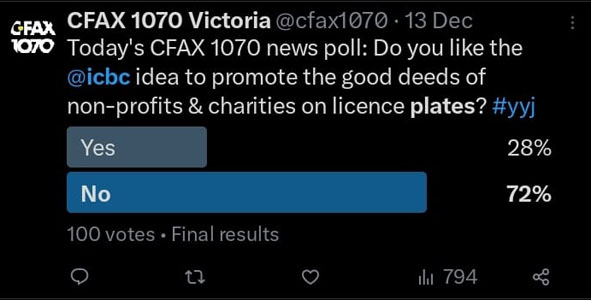British Columbia Specialty License Plates |
||||||||||||||||||||||||||||||||||||||||||||||||||||||||||||||||||||||||||||||||||||||||||||||||||||||||||||||||||||||||
After a hiatus of almost 7 years, ICBC announced on December 11, 2023, that it was taking tentative steps to restart its Specialty License Plate Program by seeking public input, through an on-line survey, on possible changes including allowing non-profits and charities to sponsor plates. According to ICBC CEO, David Wong, ICBC “regularly get requests from people asking whether there are licence plate options beyond what we currently offer. Hearing directly from British Columbians on this topic is an important first step on a longer journey toward a wider variety of licence plates on our roads.” The survey is open until January 31, 2024, and, while the questions are not terribly profound or designed to get to deep insights, we encourage all friends of BCpl8s.ca to complete it: Specialty Licence Plates Program Expansion. |
Needless to say, we here at BCpl8s.ca are cautiously optimistic that this survey will lead to new plate options in the near future. We are also profoundly relieved that the Corporation has moved away from calling this its “Affinity License Plate Program” as this language is used no where else in North America while the common usage amongst motor vehicle administrators and collectors is Specialty License Plates! While we await the end of the Survey and the results being released, we thought a short history of these types of plates might be interesting ... |
Origin Story |
||||
With 15 years, however, California pioneered the use of symbols when it introduced a grizzly bear emblem to renew its plates in 1916. The bear, despite also being the official state animal, was chosen to signify the “strength, courage and independence” of the state.
This simple yet transformative idea – the notion that a logo would change the face of licence plates across North America. At the same time, the North American road network had become more extensive, and motorists were increasingly able to travel long distances in their automobiles. Many states and provinces, including British Columbia, began to realize that the acronyms used to identify their licence plates were not always recognizable in other jurisdictions.
Consequently, the full name of the issuing jurisdiction began to become more common on licence plates, and this simple innovation soon came to be seen as a “suggestive form of advertising”, or tourism promotion in neighbouring jurisdictions. These dual themes of Tourism and Economic promotion would characterise the changing design and use of license plates over the course of the 1920s. Utah would issue a red plate (1923) to promote its red rocks, New Hampshire enshrined the “Old Man of the Mountain” (1926), while Arkansas and Florida included outlines of their boundaries. In 1928, both Prince Edward Island the Idaho broke the mould by including slogans promoting primary industries unrelated to state identification. |
||||
 |
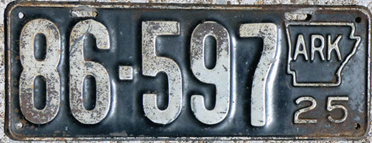 |
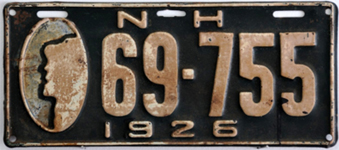 |
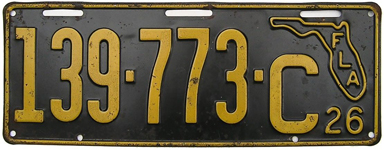 |
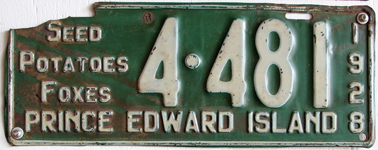 |
 |
Other jurisdictions took note, with Kentucky proclaiming it was “For Progress” (1929) and South Carolina reminding everyone it had Iodine (important for warding off goitre). Even the Victoria Junior Chamber of Commerce got in the act, advocating for British Columbia to place timber on its license plates in 1929 (an idea which would continued to be promoted for decades). This was not without controversy, particularly when California and New York used their license plates to promote competing World's Fairs to be held in 1939. Motorists objected to having their cars used as mobile billboards for what were seen to be private commercial interests. Some motorists went so far as to deface their plates by covering up the slogan or cutting it off, but when ticketed by police for their actions generally found an unsympathetic court system. By the 1950s, however, the use of slogans had expanded exponentially as had the use of specific colour combinations on license plates to denote various thing including local universities or sporting team championships.
It is also at this time that states began to use their license plates to promote more political contentious issues. Alabama's inclusion of the “Heart of Dixie” slogan in 1955 is understood to be a visible manifestation of that State's stance against the emerging civil rights movement of the time:
The issue of using license plates to promote private commercial interests was tested again in 1964 when New York used its license plates to advertise the World's Fair being held that year. As had occurred in the late 1930s, motorists protesting the State's decision to include a reference to the Fair on its license plates by covering up the slogan were fined.
Despite an early victory against the State (see headline above), the complainant, Kenneth Froslid, eventually lost his challenge and was required to affix plates with the “World's Fair” slogan to his car. When New Hampshire changed its slogan to the state motto; “Live Free of Die” in 1971, this was challenged to the US Supreme Court after it threw one of its motorists - who also happened to be a Jehovah's Witness - in jail for covering up the slogan on the basis that death was not, actually, preferable to state oppression. The Supreme Court subsequently determined in 1977 that the State could not constitutionally require its citizens to “use their private property as a ‘mobile billboard’ for the state’s ideological message.”
Following the Court's Maynard decision, a chill was put on license plate slogans and imagery that might prove contentious as well as enforcement against motorists that covered up their slogans, not that this stopped States from trying. In 1982, Maine attempted to crack-down on an anti-nuclear protestor who changed the State slogan from “Vacationland” to “Radiationland”, but lost the following year in State Supreme Court due to infringing on the motorists freedom of expression rights as articulated in the Maynard case.
Florida eventually found a way to free states from the constraints imposed by Maynard when it introduced what is generally considered to be the first, true “Specialty License Plate” commemorating the loss of the Space Shuttle Challenger in 1986: |
|||||||||||||
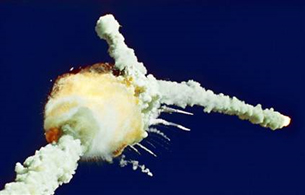 |
 |
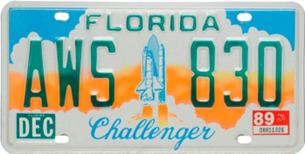 |
The plates were a HUGE success and did not trigger the "compelled speech" issues that had landed New Hampshire in front of the Supreme Court for a decade earlier. Proceeds from the sale of the Challenger “Specialty” license plate was $17, with funds going to build a memorial at the Kennedy Space Centre (shown above right). This was not lost on other states who quickly introduced their own specialty plate programs and, by the mid-1990s, dozens of US states as well as some Canadian province (most notably Ontario) were rolling out extensive “Specialty” license plate programs. Today (2023), there are thousands and specialty plate options offered by jurisdictions across North America, with Maryland the undisputed champion with nearly 1,000 different options for motorists to choose from. |
 |
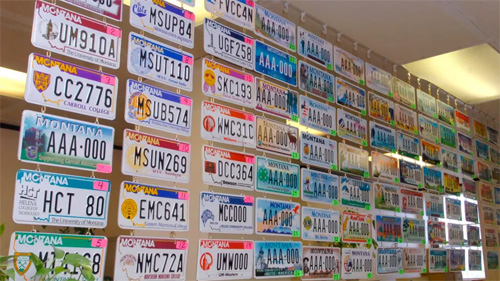 |
While a lot of worthwhile causes have likely benefited from the funds raised by these plates, there have also controversial proposals. While some, like the anti-abortion “Choose Life” and Confederate Flag plates date to the 1990s, the attacks of September 11, 2001, predictably found their way onto many states license plates, either as somewhat benign commemorations, such West Virginia’s and California’s remembrance plates, to the more muscular “Fight Terrorism” issued by Virginia.
Airriess, Hawkins and Vaughan (2012) have written about a revitalised American national identity being tied to the attacks, but also of a crisis of national identity. Dissatisfaction with the lack of federal government action, has spurred States (usually those known as “Red”) to define what the American national identity should be through laws addressing abortion, same-sex marriage, school prayer, teaching of evolution, English language use, undocumented immigrants and gun rights. These trends have invariably manifested themselves on nationalist-themed license plates issued from 2002 onwards: |
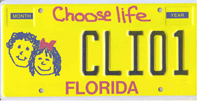 |
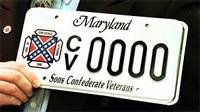 |
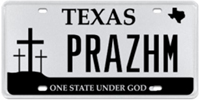 |
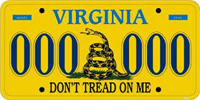 |
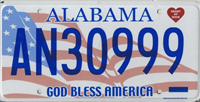 |
 |
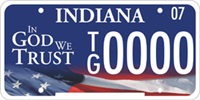 |
These writers suggest that during periods of national identity crisis or when the security of the nation is threatened the use of the flag, the eagle, and other reminders of nationhood “help define the politico-cultural values of the homeland.” |
The B.C. Experience |
British Columbia was not immune from these trends, even if it has largely resisted them for the past 35 years. Some of the early innovations that the province did adopt included:
|
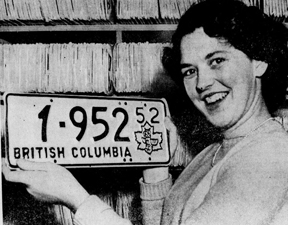 |
 |
 |
 |
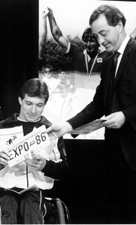 |
As “Specialty” plates became widespread and common by the mid-1990s, Astrographic's, the province's license plate manufacturer, pitched the idea of creating its own “Specialty” license plates that showcased three (3) different landscapes from across the province. This included a coastal mountain range (below-left), Interior grasslands (below-centre) and northern forest (below-right). Motorists would then have the option of ordering the design of their choice an extra cost: |
A second idea that Astrographic pitched based on what was happening in other jurisdictions was to introduce themed plates that various organizations could sponsor with a percentage of the sales going to fund their operations. As examples, Astrographic produced some test plates that displayed logos for the University of British Columbia (below-left), the Children's Hospital Foundation (below-centre) and Scouts Canada (below-right): |
The election of the Liberal Party in 2001 was, in many ways, a “New Era” in the progression towards “Specialty” license plates. A restricted “Specialty” plate was introduced in 2004 for motorists who met certain criteria to be considered a Veteran and, as the name suggests, this plate was not available to all motorists. In 2007, a general issue “Specialty” plate to commemorate the 2010 Winter Olympic Games being held in Vancouver was issued, but included a sunset clause that would see sales of the plates cease after December 31, 2012 (which was a good idea). |
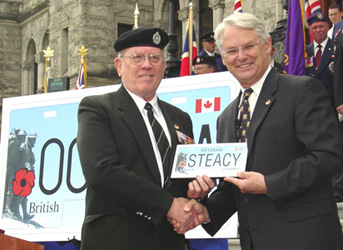 |
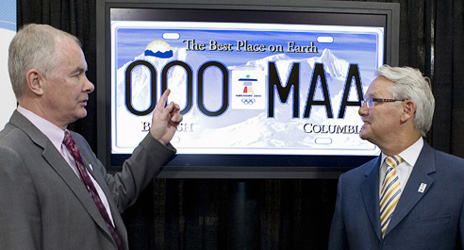 |

In 2010, the Corporation announced that it was going to be updating and modernising its operations as part of what it called, “Transformation 2014”. The new technology that ICBC was investing in would, it was reported, include the following:
Not much attention was given to “Transformation 2014” at the time, after all, what, if anything, is exciting about a new computer system at an insurance company? And, consider this; there is an insanely high failure rate for technology projects (somewhere in the neighbourhood of 70-80%) and the Corporation had a checkered history with such projects. For those with a long memory, the “Next Generation Insurance System” (NGIS) was abandoned by ICBC in 1997 after many years of development and tens of millions of dollars had been spent. Well, the hidden significance of “Transformation 2014” was the introduction of new vehicle registration systems, as this would allow for ICBC to expand the Specialty License Plate Program, thereby affording BC drivers a new and highly visible way to express their political, social and cultural affiliations through their licence plates. |
While “Transformation 2014” slowly morphed into simply “Transformation” as delays and technical problems had to be overcome, ICBC eventually introduced the Memorial Cross plate in 2016 (another restricted “Specialty” plate) followed by the first, true “Specialty” plate in January of 2017; the wildly successful BC Parks plate! |
 |
 |

On April 3, 2017, ICBC announced that it was seeking formal “Expressions of Interest” from organizations interested in sponsoring what the Corporation was calling its “Affinity Licence Plate Program”. Submissions were to be submitted to the Corporation by May 19, 2017, and would be used to help ICBC shape its program going forward. For posterity we have archived a copy of the Request for Expressions of Interest; Click Here. Unfortunately, the Corporation's timing in making the announcement was terrible! Eight days later, on April 11, 2017, Premier Christy Clark visited the Lieutenant Governor to have the Legislature dissolved and an election called for May 9, 2017 (10 days prior to the close of the deadline for specialty license plate proposals to be submitted to ICBC).
One of the first things the NDP government did upon assuming the levers of power was to shine a spotlight on the mismanagement of ICBC by former Liberal administrations (dating to 2001). The new Attorney General, David Eby, went so far as to refer to the situation as a “Dumpster Fire”: |
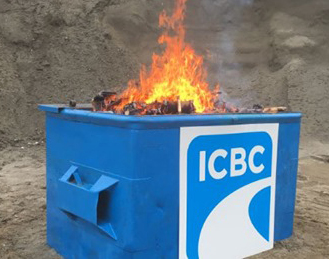 |
|
 |
|
 |
With the emphasis on restoring the financial solvency of the Corporation, non-essential programs, such as Specialty License Plates, were effectively shelved for the foreseeable future. Below are some standards Tweets put out by the Corporation when people lamented on social media about the absence of Specialty License Plate options:
|
Looking to the future |
Which brings us up to the most recent announcement (2023-12-11) regarding the Public Engagement seeking driver's input on an expanded Specialty license plate program: |
 |
 |
 |
|
To us here at BCpl8s.ca, the survey strikes us as senseless community engagement and not something that warrants public input as it does not involve a question about taxation, a basic human health and safety concern or some other pressing public policy issue (e.g. environmental protection). Moreover, we suspect that the government and/or ICBC already know what direction they want to go in with this file given the previous announcement regarding “Affinity” plates in 2017 and engagement is merely window dressing given the fiasco that happened when it was proposed to expand the eligibility for the Veteran specialty plate in 2018 (Click here to read more!). Assuming, therefore, that the “Specialty” License Plate Program will be expanded in the coming years, what can British Columbia motorists expect? Given “Specialty” license plates have been issued by jurisdictions across North America for the better part of 40 years, the Playbook is well established and one need only look at ICBC's sister public insurer in Manitoba and its “Specialty” license plate program for clues, as we believe Manitoba is providing the blue-print for ICBC's own program:
Additional information regarding Manitoba's program can be found here: MPI Specialty Licence Plate Program. Below are some of the plates that MPI has issued over the past decade: |
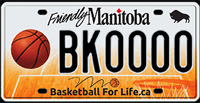 |
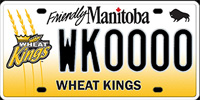 |
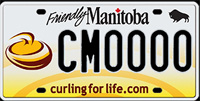 |
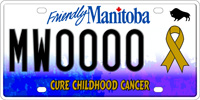 |
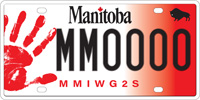 |
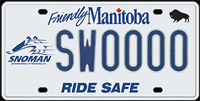 |
 |
 |
 |
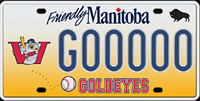 |
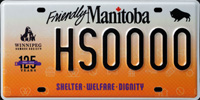 |
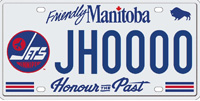 |
In addition to the criteria that MPI uses, we here at BCpl8s.ca hope that ICBC will implement additional guidelines, including:
Not all Specialty License Plates are created equal! BC Parks has had the field to itself for the past 6 years, but a Vancouver Canucks themed license plate would instantly become the behemoth in the market place and could be competing against hospital charity funds, animal welfare or literacy groups for a finite amount of motorists dollars. Should a highly successful, multi-million dollar business entity be allowed to have a Specialty Licence Plate, even if proceeds from sales are directed to a charitable organization, such as Canucks House? To compete against sports teams and universities, smaller charities may feel compelled to cater to drivers whimsy's with designs and slogans that are seemingly un-related to their mandate. Consider these designs from the US: |
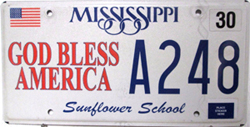 Funds from the sale of "God Bless America" plates in Mississippi go to finance the restoration of a former school building. |
|
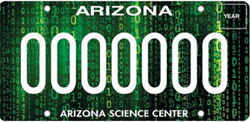 Funds from the sale of the "Matrix" plates in Arizona go to fund science education through the Arizona Science Centre. |
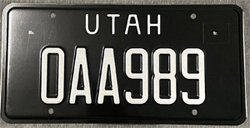 Funds from the sale of "Blackout" plates in Utah - which are wildly popular - go to fund the State Historical Society. |
A cap and performance criteria should be used to winnow out non-performers or less popular plate types, but this will invariably lead to pleas of hardship from some organizations and, before you know it, there are 100+ specialty plates to pick from (with some only selling one or two plates a year). Finally, there have been occasions where the funds raised by a specialty license plate to be used in ways that a motorist may not have been aware of when paying for the plate (see California, Tennessee, Nevada and even British Columbia; here and here!). |
While it is currently unknown how many submissions for an “Affinity” license plate ICBC received between April and May of 2017, we suspect that one submission might have come from the Allied Golf Association of BC.
ICBC denied any arrangement with the AGA at the time, which we believe as such a plate never materialized. |
CFAX ran a completely un-scientific poll on December 11, 2023, regarding the proposed expansion of the Specialty License Plate Program and its listeners are, decidedly, a bunch of wet rags:
That said, the survey being run by the province is equally un-scientific but, unlike the 2018 survey on the proposed expansion of the Veteran license plate program, there probably isn't a motivated group of motorists who will turn-out en mass to try and sway the current survey to the negative. |
Antique | APEC | BC Parks | Chauffeur Badges | Collector | Commercial Truck | Consul | Dealer | Decals | Driver's Licences | Farm | Ham Radio | Industrial Vehicle | Keytags | Lieutenant Governor | Logging | Manufacturer | Medical Doctor | Memorial Cross | Motive Fuel | Motor Carrier | Motorcycle | Movie Props | Municipal | National Defence | Off-Road Vehicle | Olympics | Passenger | Personalized | Prorated | Prototype | Public Works | Reciprocity | Repairer | Restricted | Sample | Specialty | Special Agreement | Temporary Permits | Trailer | Transporter | Veteran | Miscellaneous |
© Copyright Christopher John Garrish. All rights
reserved.


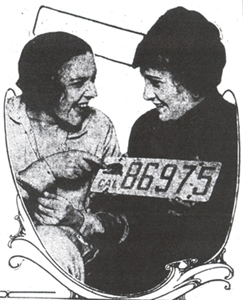 When, in 1901, New York state implemented the first law in North America requiring the registration of motor vehicles and the displaying of a number, license plate design was, at best, rudimentary and generally consisted of house numbers on a piece of leather.
When, in 1901, New York state implemented the first law in North America requiring the registration of motor vehicles and the displaying of a number, license plate design was, at best, rudimentary and generally consisted of house numbers on a piece of leather. The following year, Arizona included the profile of a Hereford steer in an attempt to promote the state’s cattle industry and boost sales.
The following year, Arizona included the profile of a Hereford steer in an attempt to promote the state’s cattle industry and boost sales.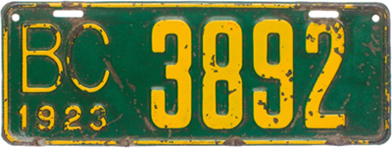

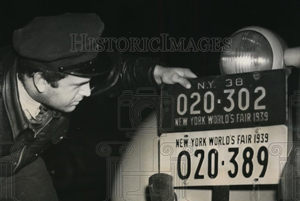
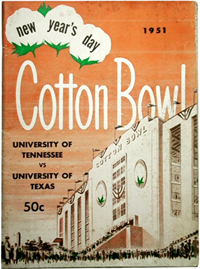
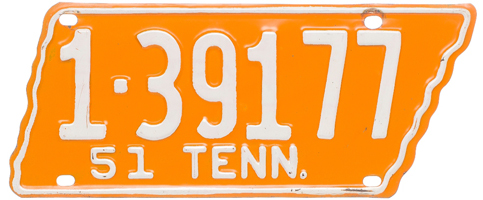
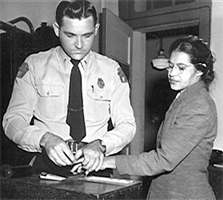
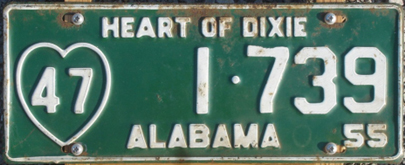
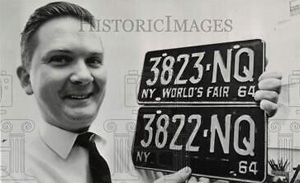



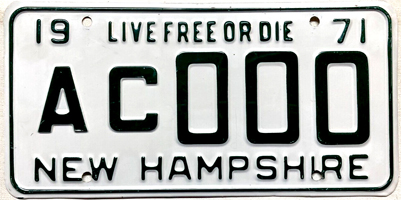




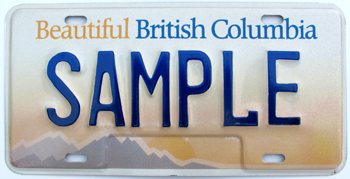
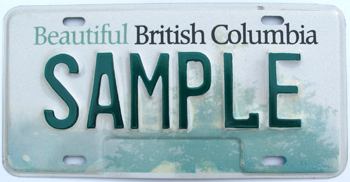
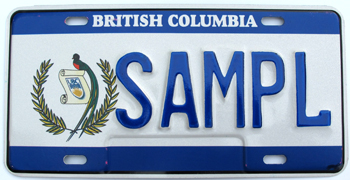
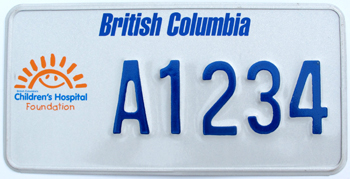

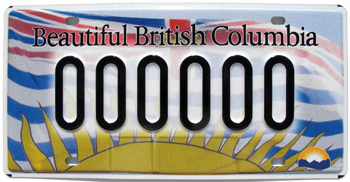
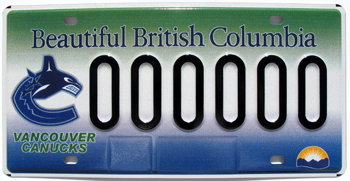
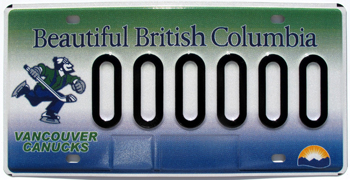
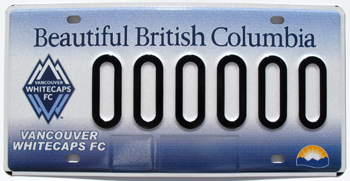
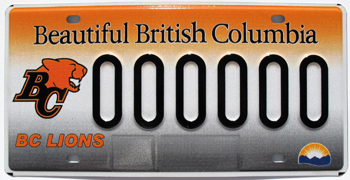
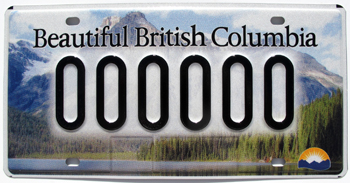
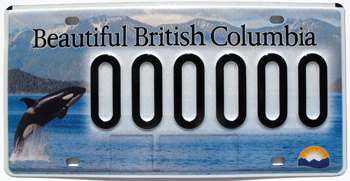

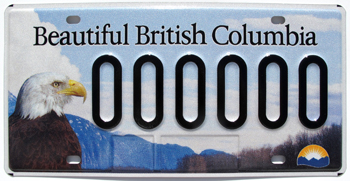

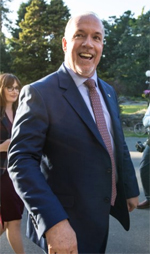 When the ballots were counted, Clark had won a minority government that would soon fall and be replaced by the New Democratic Party (NDP) under the leadership of John Horgan.
When the ballots were counted, Clark had won a minority government that would soon fall and be replaced by the New Democratic Party (NDP) under the leadership of John Horgan.



 It has been demonstrated many times, in many other jurisdictions that politicians are generally incapable of saying “no” to a specialty license plate design, rendering any other criteria around broad community support, divisiveness, politics and feasibility meaningless. Keep the politicians out of the process!
It has been demonstrated many times, in many other jurisdictions that politicians are generally incapable of saying “no” to a specialty license plate design, rendering any other criteria around broad community support, divisiveness, politics and feasibility meaningless. Keep the politicians out of the process! 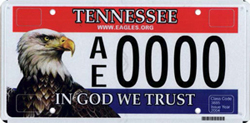
 This is because the AGA jumped the gun and prematurely announced the creation of a specialty golf plate in May of 2016:
This is because the AGA jumped the gun and prematurely announced the creation of a specialty golf plate in May of 2016: